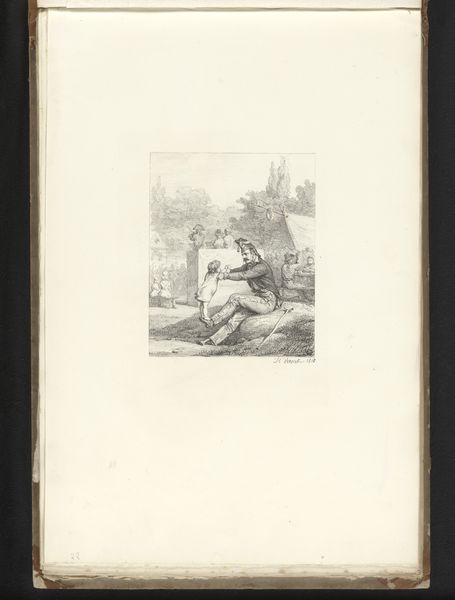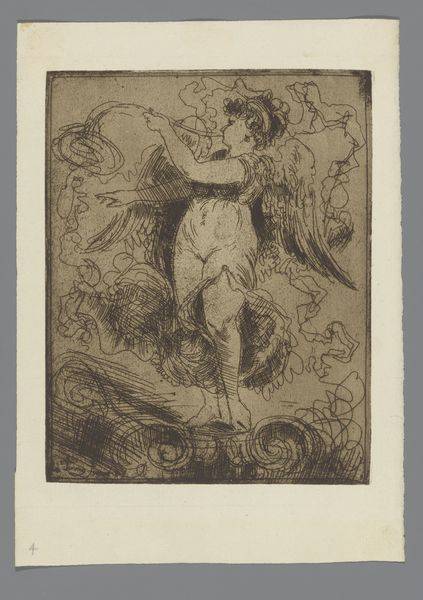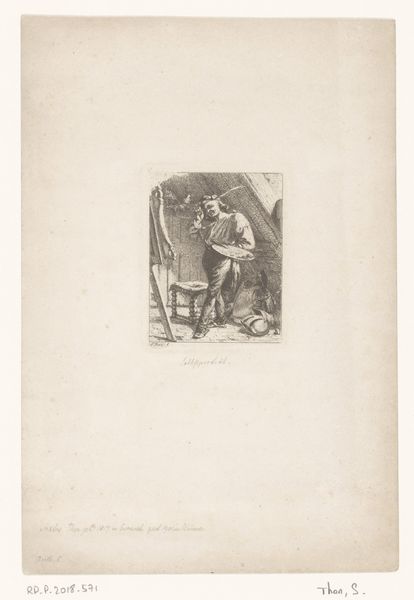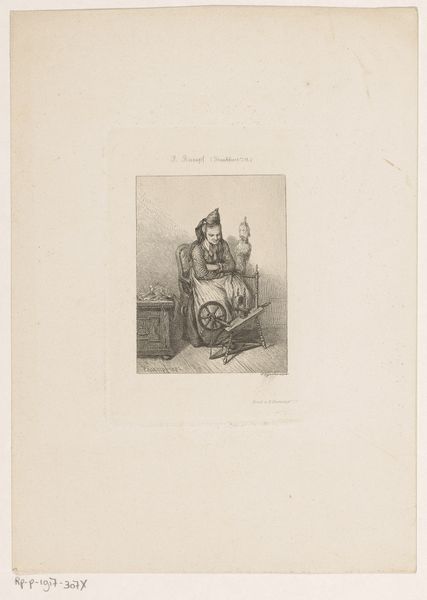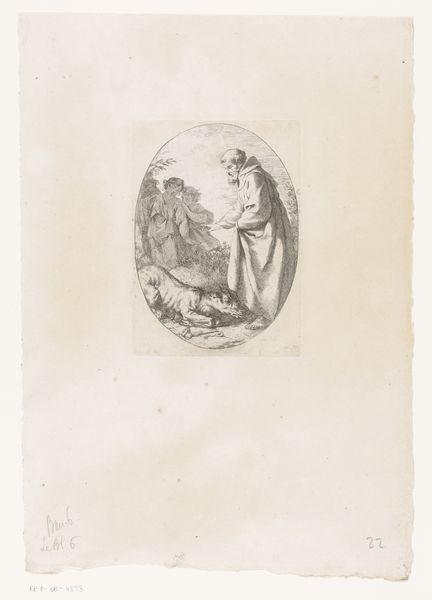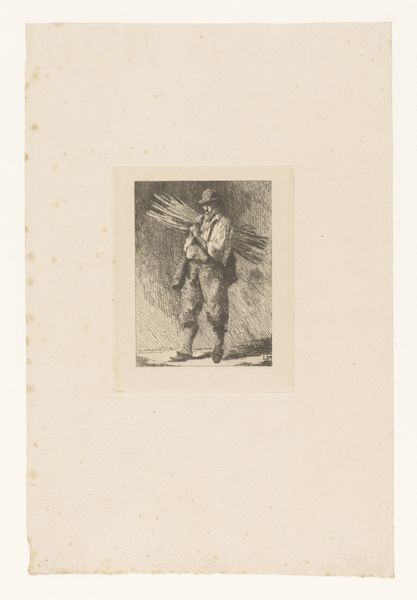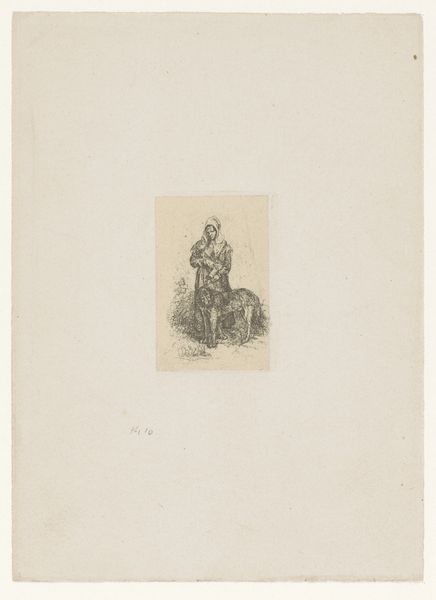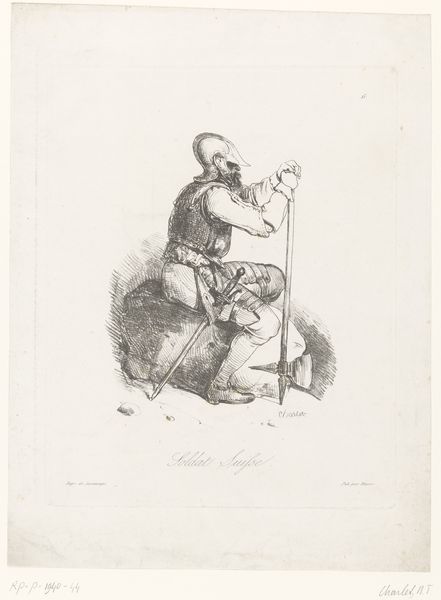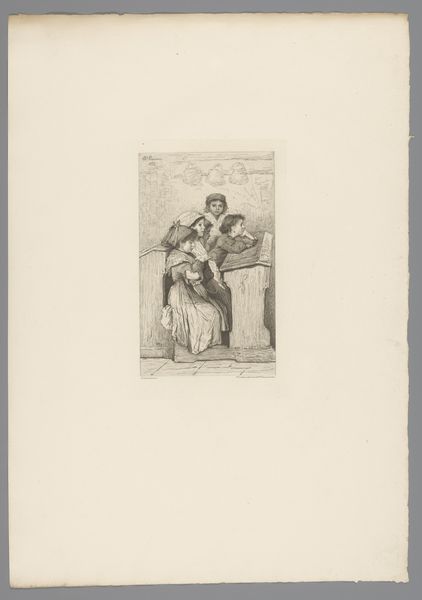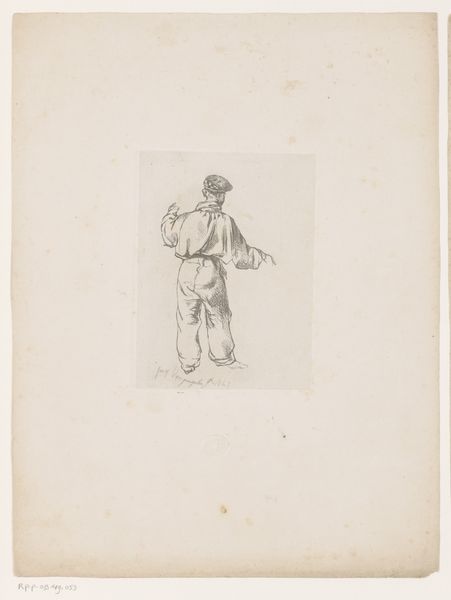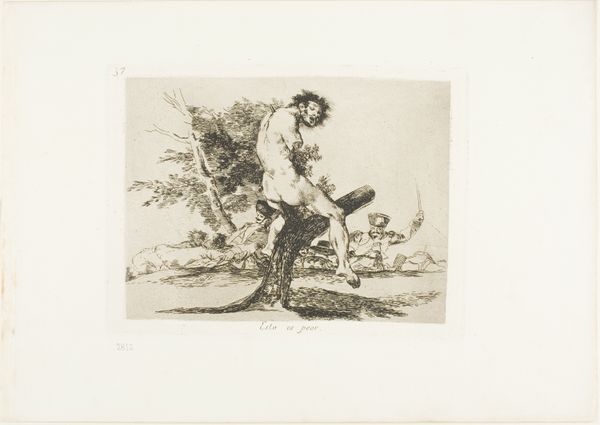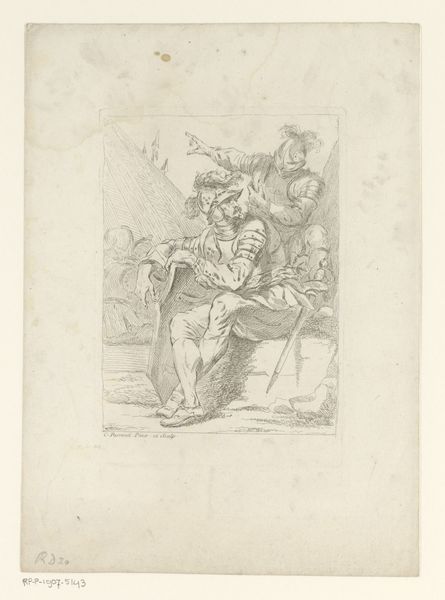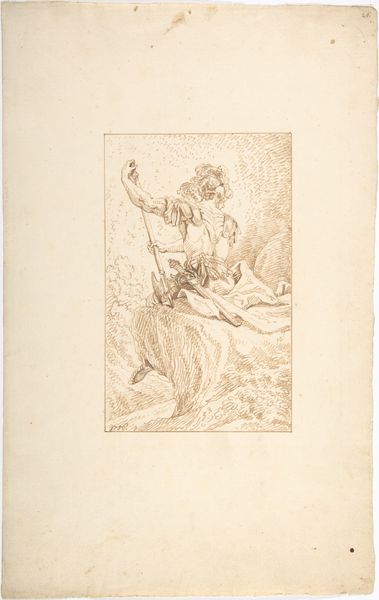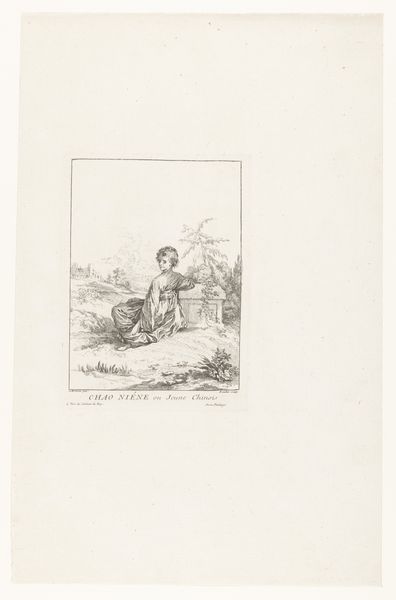
Dimensions: 175 × 119 mm (image); 372 × 273 mm (sheet)
Copyright: Public Domain
Curator: Let's delve into Renoir’s lithograph, "Woman with Grapevine, 1st variant," likely created sometime between 1904 and 1919, and held here at the Art Institute of Chicago. It's quite intriguing. Editor: Well, first glance? It feels like a whisper of a memory, a fleeting vision emerging from charcoal smoke. Very dreamlike. Is she dancing? It seems performative. Curator: Indeed. Let’s contextualize that “dream.” We're viewing a time when representations of women in art were deeply entrenched in patriarchal power dynamics. The grapevine itself has various symbolic resonances – fertility, abundance, but also intoxication and the Dionysian, challenging rigid social mores. This print appears at the intersection of these interpretations, doesn't it? Editor: Absolutely, especially as she’s partially draped, with something over her eyes. She embodies this raw sensuality mixed with restraint, doesn't she? The grapevine appears to restrain her movements, almost, giving a hint of erotic charge. Plus, the roughness of the lithograph makes the whole scene that much more immediate. Curator: The lithographic process Renoir employed allowed for a softness and immediacy not typically seen in prints. Examining Renoir's Impressionist context is crucial; his engagement with light and form pushed beyond academic tradition. But the objectification is something to consider when examining female portraiture, so what possibilities do we see with such established problematic visual economies? Editor: Hmm, that's complicated. It makes me think of the push and pull we experience even now, between desiring freedom of expression and battling imposed expectations. Maybe her ambiguous stance--is she constrained or liberated-- reflects how art grapples with these tensions. It’s unfinished, raw and intimate—I'd almost say it captures the internal dialogue we women hold. Curator: That interpretation acknowledges the female gaze within a very complex context. This approach helps us unpack Renoir's contribution to not only Impressionism, but challenges inherent issues of representation and female objectification. Editor: Right! Because it's less about fixed answers and more about staying in that liminal space of questioning, where beauty and challenge can coexist. It makes me feel like picking up my own pencil... What do you make of it, now? Curator: It encourages us to stay critical and explore those contradictions to develop strategies of social justice and emancipation through art, while questioning artistic and historic value. Editor: Well said. An unfinished invitation for ongoing dialogue, I’d say!
Comments
No comments
Be the first to comment and join the conversation on the ultimate creative platform.
